Filter by

Expression and Purification of A Bioactive Recombinant Fungal Immunomodulator…
Fungi, particularly medicinal mushrooms, have been extensively harvested for their natural compounds for alternative medicine because they provide benefits with little to no adverse effects. FIPs, or fungal immunomodulatory proteins, are one that have been extensively studied for their immunomodulatory activities to promote lymphocyte production and subsequently enhance cytokine production. FIP…
- Edition
- -
- ISBN/ISSN
- -
- Collation
- -
- Series Title
- -
- Call Number
- BM036

Next-Generation Sequencing and Prediction of T-cell Epitopes from Structural …
The COVID-19 global pandemic caused by SARS-CoV-2 has been going on for almost two years and has negatively impacted the global population. The same as other viruses, SARS-CoV-2 is continuously mutating to adapt to the environment, and this may result in negative impacts, such as an increase in virus transmission, virulence, and even resistance to vaccines. Hence, questions regarding whether th…
- Edition
- -
- ISBN/ISSN
- -
- Collation
- -
- Series Title
- -
- Call Number
- BM 22-048

The Role of Receptor Activity Modifying Proteins (RAMPs) in Pancreatic Cancer
Pancreatic Cancer (PaCa) is the 5th leading cause of cancer-related death in the UK. Understanding the signalling behind PaCa development is essential to create novel treatment for PaCa. RAMPs are family of single transmembrane domain proteins. The interaction between RAMP and GPCR give rise to AM receptor complex. AM is a hormone that has been shown to promote progression of various tumou…
- Edition
- -
- ISBN/ISSN
- -
- Collation
- -
- Series Title
- -
- Call Number
- BM 23-010

Investigation on the Removal of Depth Filter For an Effective Human Recombina…
Erythropoietin is a glycoprotein hormone produced by the kidney, which triggers the formation of red blood cells in the bone marrow. However, due to chronic kidney disease, the erythropoietin hormone is insufficiently produced in anemic conditions. Hence, a therapeutic recombinant human erythropoietin (rhEPO) is the alternative way to overcome chronic anemia. Genetically engineered host cells,…
- Edition
- -
- ISBN/ISSN
- -
- Collation
- -
- Series Title
- -
- Call Number
- BT 23-021

Investigation on the removal of Depth Filter for an effective Human Recombina…
Erythropoietin is a glycoprotein hormone produced by the kidney, which triggers the formation of red blood cells in the bone marrow. However, due to chronic kidney disease, the erythropoietin hormone is insufficiently produced in anemic conditions. Hence, a therapeutic recombinant human erythropoietin (rhEPO) is the alternative way to overcome chronic anemia. Genetically engineered host ce…
- Edition
- -
- ISBN/ISSN
- -
- Collation
- -
- Series Title
- -
- Call Number
- EP BT021

The Potential of Gynura Divaricata Interaction with Malaria Blood-Stage Prote…
Malaria is a parasitic infection affecting people worldwide, with P. falciparum being the most dangerous. Identifying more validated asexual and sexual blood-stage drug targets may be key to malaria eradication and control for a variety of reasons. Gynura divaricata (Lour.) Merr. is an Indonesian medicinal herb that contains various natural compounds with antibacterial and potentially antim…
- Edition
- -
- ISBN/ISSN
- -
- Collation
- -
- Series Title
- -
- Call Number
- BM 22-013

Protein metabolism and nutrition
- Edition
- -
- ISBN/ISSN
- 0408706694
- Collation
- ix, 515 p. : ill. ; 24 cm.
- Series Title
- -
- Call Number
- 636.08 Col p
- Edition
- -
- ISBN/ISSN
- 0408706694
- Collation
- ix, 515 p. : ill. ; 24 cm.
- Series Title
- -
- Call Number
- 636.08 Col p

Evaluation of proteins for human
- Edition
- -
- ISBN/ISSN
- 0870552155
- Collation
- xvi, 327 p. : ill. ; 24 cm.
- Series Title
- -
- Call Number
- 612.398 Bod e
- Edition
- -
- ISBN/ISSN
- 0870552155
- Collation
- xvi, 327 p. : ill. ; 24 cm.
- Series Title
- -
- Call Number
- 612.398 Bod e
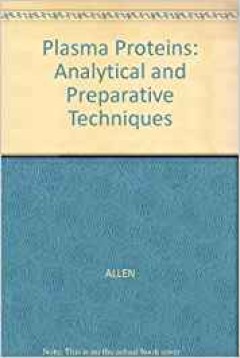
Plasma proteins analytical and preparative techniques
- Edition
- -
- ISBN/ISSN
- 0632002794
- Collation
- vi, 254 p. : ill. ; 25 cm.
- Series Title
- -
- Call Number
- 591.1 All p
- Edition
- -
- ISBN/ISSN
- 0632002794
- Collation
- vi, 254 p. : ill. ; 25 cm.
- Series Title
- -
- Call Number
- 591.1 All p

Mammalian protein metabolism volume I
- Edition
- -
- ISBN/ISSN
- 0125106041
- Collation
- v. 566p. 24 cm.
- Series Title
- -
- Call Number
- 591.13 Mun m
- Edition
- -
- ISBN/ISSN
- 0125106041
- Collation
- v. 566p. 24 cm.
- Series Title
- -
- Call Number
- 591.13 Mun m
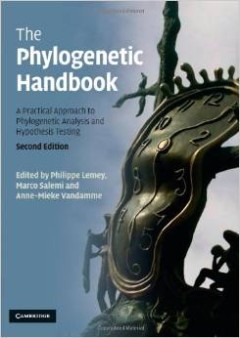
The phylogenetic handbook : a practical approach to phylogenetic analysis and…
The Phylogenetic Handbook is a broad, hands on guide to theory and practice of nucleotide and protein phylogenetic analysis. This second edition includes six new chapters, covering topics such as Bayesian inference, tree topology testing and the impact of recombination on phylogenies, as well as a detailed section on molecular adaptation. The book has a stronger focus on hypothesis testing than…
- Edition
- 2nd
- ISBN/ISSN
- 9780521730716
- Collation
- xxvi, 723 p. : ill. : ind. ; 26 cm.
- Series Title
- -
- Call Number
- 578.012 Phy
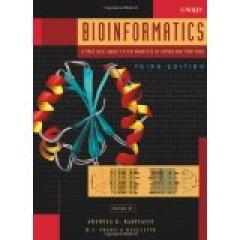
Bioinformatics : a practical guide to the analysis of genes and proteins
This fully revised version of a world-renowned bestseller provides readers with a practical guide covering the full scope of key concepts in bioinformatics, from databases to predictive and comparative algorithms. Using relevant biological examples, the book provides background on and strategies for using many of the most powerful and commonly used computational approaches for biological discov…
- Edition
- 3rd
- ISBN/ISSN
- 9780471478782
- Collation
- xviii, 540 p. : ill. : ind. ; 25 cm.
- Series Title
- -
- Call Number
- 572.8 Bax b

Introduction to protein science : architecture, function, and genomics
Introduction to Protein Science, Second Edition, relates the study of proteins to the context of modern high-throughput data streams of genomics and proteomics. It also provides a balanced treatment of the relationship between computational and experimental methods. The text is enhanced by marginal notes, exercises, problems, and "weblems" that develop students' database and computational serve…
- Edition
- 2nd
- ISBN/ISSN
- 9780199541300
- Collation
- xix, 455 p. : ill. : ind. ; 28 cm.
- Series Title
- -
- Call Number
- 572.6 Les i

Purifying proteins for proteomics : a laboratory manual
This manual complements Simpson's Proteins and Proteomics manual, with a comprehensive collection of methods for protein purification from a variety of source preparations. The protocols are accompanied by extensive discussion of potential pitfalls and troubleshooting advice.
- Edition
- -
- ISBN/ISSN
- 9780879696962
- Collation
- xi, 801 p. : ill. : ind. ; 28 cm.
- Series Title
- -
- Call Number
- 572.6 Pur

Proteins and proteomics : a laboratory manual
Completion of sequencing of the human genome, as well as those of many other organisms, has now opened the door for exploration of the proteome, the many thousands of interacting proteins in a given organism. Critical to tackling the complexity of the proteome is a workable strategy using reliable and tested protocols for identifying, isolating, and quantifying proteins in cells and cell pathwa…
- Edition
- -
- ISBN/ISSN
- 9780879695545
- Collation
- xiii, 926 p. : ill. : ind. ; 28 cm.
- Series Title
- -
- Call Number
- 572.6 Sim p
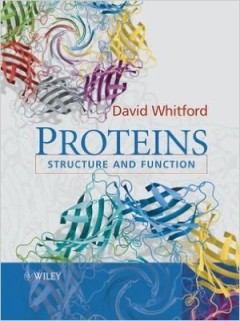
Proteins : structure and function
Proteins: Structure and Function is a comprehensive introduction to the study of proteins and their importance to modern biochemistry. Each chapter addresses the structure and function of proteins with a definitive theme designed to enhance student understanding. Opening with a brief historical overview of the subject the book moves on to discuss the ‘building blocks’ of proteins and their …
- Edition
- -
- ISBN/ISSN
- 978-0471498940
- Collation
- xiv, 528 p. : ill. : ind. ; 27 cm.
- Series Title
- -
- Call Number
- 572.6 Whi p
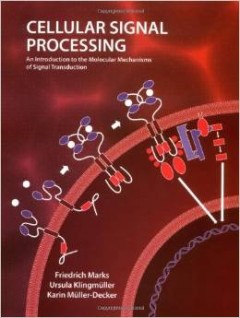
Cellular signal processing : an introduction to the molecular mechanisms of s…
Cellular Signal Processing is intended for use in signal transduction courses for undergraduate and graduate students. It offers a unifying view of cell signaling that is based on the concept of protein interactions acting as sophisticated data processing networks that govern intracellular and extracellular communication. The content is guided by three major principles that are central to signa…
- Edition
- -
- ISBN/ISSN
- 9780815342151
- Collation
- xiii, 634 p. : ill. : ind. ; 28 cm.
- Series Title
- -
- Call Number
- 571.74 Mar c

Protein NMR spectroscopy : principles and practice
Protein NMR Spectroscopy combines a comprehensive theoretical treatment of NMR spectroscopy with an extensive exposition of the experimental techniques applicable to proteins and other biological macromolecules in solution. Beginning with simple theoretical models and experimental techniques, Protein NMR Spectroscopy develops the complete repertoire of theoretical principles and experimental te…
- Edition
- -
- ISBN/ISSN
- 9780121644918
- Collation
- xxv, 885 p. : ill. : ind. ; 24 cm.
- Series Title
- -
- Call Number
- 543.5 Cav p
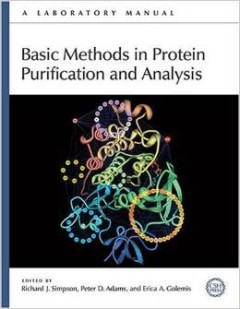
Basic methods in protein purification and analysis : a laboratory manual
Understanding how proteins function is an essential part of many biological research endeavors. The complexity and sheer number of proteins in a cell are impediments to identifying proteins of interest or purifying proteins for function and structure analysis. Thus, reducing the complexity of a protein sample or in some cases purifying a protein to homogeneity is necessary. The latest manual in…
- Edition
- -
- ISBN/ISSN
- 9780879698676
- Collation
- vi, 436 p. : ill. : ind. ; 28 cm.
- Series Title
- -
- Call Number
- 572.6078 Bas

Liquid chromatography : applications
- Edition
- -
- ISBN/ISSN
- 9780124158061
- Collation
- xiii, 667 p. : ill. : ind. ; 24 cm.
- Series Title
- -
- Call Number
- 543.84 Liq
- Edition
- -
- ISBN/ISSN
- 9780124158061
- Collation
- xiii, 667 p. : ill. : ind. ; 24 cm.
- Series Title
- -
- Call Number
- 543.84 Liq
 Computer Science, Information & General Works
Computer Science, Information & General Works  Philosophy & Psychology
Philosophy & Psychology  Religion
Religion  Social Sciences
Social Sciences  Language
Language  Pure Science
Pure Science  Applied Sciences
Applied Sciences  Art & Recreation
Art & Recreation  Literature
Literature  History & Geography
History & Geography